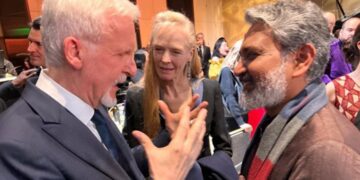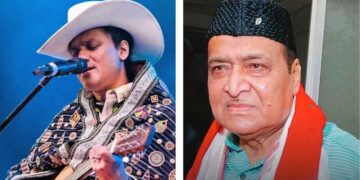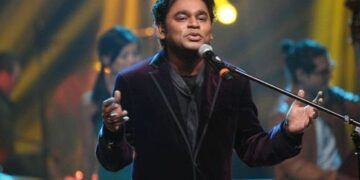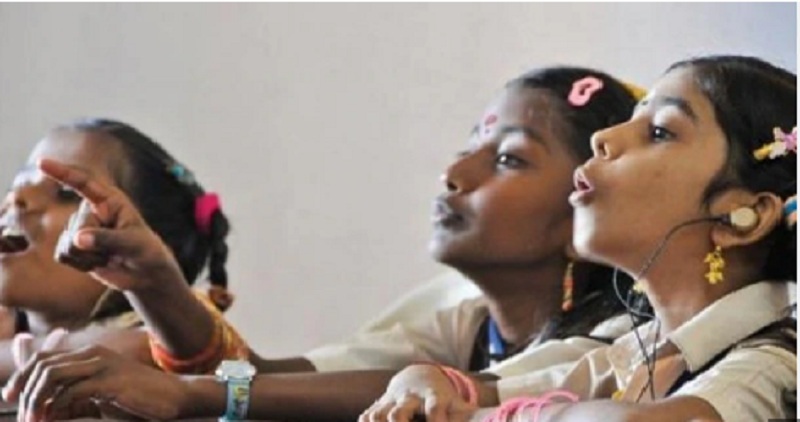By Abhimanyu Sharma
The deaf and hard-of-hearing (DHH) people are a historically marginalised group in India. Their needs, as a recent study shows, have largely remained neglected.
Such neglect is evident at multiple levels.
At the administrative level, one notices the relatively scant number of debates that have taken place in the Indian parliament on the subject. In academics, there is little research in India, on the DHH people. And then, there are the unfavourable societal attitudes towards them.
A study on the social integration of the deaf conducted around two decades ago noted that 82 percent of deaf respondents were dissatisfied with the attitude of their family members towards them, whereas 93 per cent were dissatisfied with the attitude of their friends, relatives and neighbours. Newer studies are few and far between.
Problem of terminology
A key problem that has added to the woes of the DHH community in India is how ‘deafness’ is officially defined.
The terms that have been used in Censuses in the past are outdated, offensive and medically inexact.
For example, the 1981 Census used the term ‘totally dumb’, which was not only offensive but also excluded hard-of-hearing people from its ambit by stipulating that deafness has to be ‘total’. It also did not acknowledge sign language by stating that ‘in the case of deaf mutes, the language usually spoken by the mother should be recorded’.
In the 1991 Census, information on disability was not included. The document claimed that people had ‘inherent reservations’ in sharing information on disability publicly.
In 1995, the Persons with Disabilities (Equal Opportunities, Protection of Rights and Full Participation) Act was brought into force, which resulted in re-inclusion of information on disability in the following census in 2001.
The 2001 Census showed 1.02 million people with hearing disability. This number rose five-fold to about five million in the 2011 Census.
This was a result of the changes in defining ‘hearing disability’ between these two censuses. The 2001 Census did not count those who used hearing-aids as having the disability while the 2011 census did so.
From a policymaking point of view, these numbers matter as numerically larger groups can exert greater influence on the state.
Oralism versus sign language
A key challenge faced by DHH people in India historically is the oralist teaching method — the use of lip-reading and speech in schools to teach such children. This approach does not employ sign language(s).
Some scholars have noted that sign language is ‘shunned’ in schools because it is a visible marker of deafness and is, therefore, stigmatised.
The consequence of the oralist teaching approach is that it leads to a high dropout rate among DHH students.
A study published in 2014 noted that around 19 percent of DHH schoolchildren (aged 6–13) were ‘out of school’: this included children who never went to school, and those who dropped out.
These figures are significantly high compared to the national average of 2.97 percent for all children (with or without disability) of the same age group and show that the DHH disability has a significant negative impact on school education.
While oralism declined in countries such as the US after resistance by the deaf community in India the ‘oralist vs sign language’ debate has persisted, as a majority of schools continue to use it.
Policy provisions
Some recent policies indicate a positive change.
In 2016, the Rights of Persons with Disabilities Act was introduced. Article 31 of this Act makes provisions for free education for children (aged 6–18) with benchmark disability in special schools of their choice.
Article 16 of the Act requires state-funded educational institutions to offer inclusive education to children with disabilities by ensuring that ‘education to persons who are blind or deaf or both is imparted in the most appropriate languages and modes and means of communication.’
Drawing on Article 40 of this Act, in 2019 the Indian Government also introduced a memorandum on ‘Accessibility Standards in Television Programmes for the Hearing Impaired’.
It makes provisions for ‘adequate funding’ from the government for the production of high-quality television programmes for the DHH people. It also proposes a phase-wise implementation of closed-captioning or sign language interpretation of television content for public and private broadcasters.
In 2015, the Indian Government created the Indian Sign Language Research and Training Centre (ISLRTC) with the purpose of developing and promoting Indian Sign Language (ISL).
In 2018, the ISLRTC launched the first Indian Sign Language Dictionary that consisted of 3,000 terms. This was further expanded to 6,000 terms in the second edition of the dictionary (2019), and to 10,000 terms in the third edition (2021).
Besides developing the dictionary, ISLRTC offers two diploma courses — one in Indian Sign Language Interpretation (one year), and another in Teaching Indian Sign Language (two years).
In 2015, the Indian Government also launched the Accessible India Campaign with the aim of making public spaces, transportation, and information and communication, accessible to people with disabilities.
Moreover, the National Education Policy 2020 states that the ‘Indian Sign Language will be standardised across the country, and National and State curriculum materials developed, for use by students with hearing impairment.’
The way forward
Despite some promising steps taken by the government in the last few years, some key challenges remain.
Without knowing the exact number of DHH persons, it is difficult to devise effective policies. Thus, for example, while the last census of 2011 estimated that there are five million DHH people, the National Association for the Deaf (India) estimates their number to be 18 million.
There are only 387 schools for DHH children in India and there is also a need to assess the implementation of accessibility standards such as adequate close-captioning in television programmes.
The way forward then is to make policies that are conducive to their needs.
First, the government should make ISL an official language of India and also recognise its users as a linguistic minority. India’s language policy has, so far, focused heavily on spoken languages, and largely ignored sign languages.
Second, the central and state governments should open more schools and higher education institutes for DHH students.
Third, the government should conduct impact assessments of policy measures taken to ensure DHH inclusion. Such impact assessments will help policymakers gain a clear picture of areas to invest in and ensure effective policy impact.
Fourth, the government should invest in research on education for DHH so that policymakers are aware of which didactic approaches work best in the Indian context.
Finally, there is a need for awareness campaigns to alleviate biases against deaf persons.
Being deaf is not easy anywhere. It is especially difficult in India. However, addressing the issues faced by the DHH community can help create the path to an inclusive society.
Abhimanyu Sharma is Teaching Associate in German Linguistics at the University of Cambridge, UK. He is also Assistant Professor in German at Jawaharlal Nehru University, New Delhi (currently on leave).
Originally published under Creative Commons by 360info™.















